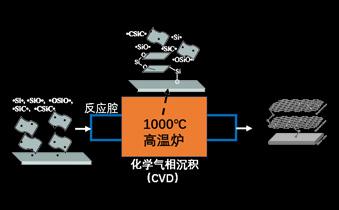Recently, people have paid special attention to silicenes, germanenes, phosphenes, and single-layer transition metal sulfur cluster compounds. These ultra-thin two-dimensional materials have good physical properties and broad application prospects in the electronic and photoelectron domains. Among them, silicenes and germanenes are semi metals similar to graphene, and opening their bandgaps to achieve their applications in optoelectronics is still an important scientific issue of concern
In addition, the physical properties of these low-dimensional nanomaterials are influenced by various internal and external factors during the preparation and device synthesis process, such as strain, defects, surrounding environment, and interlayer interactions
In order to better understand their electronic and optical properties under these factors, we simulate their electronic structure and optical absorption based on the first principle density functional theory theory and Møller–Plesset perturbation theory, so as to explore the mechanism behind them and provide practical theoretical guidance for experimental workers

The main content is as follows:
1) The modulation of electronic and optical properties of hydrogenated silene by tensile strain. Silene is a semi metal similar to graphene, and the complete hydrogenation of silene can open a moderate indirect bandgap (2.1 eV) of silene, which hinders its practical application in optoelectronic devices. Therefore, some means are needed to change the nature of its indirect bandgap. In two-dimensional layered materials, strain is one of the effective means of modulating material properties, We observe the electronic structure and optical response of hydrogenated silylene under biaxial tensile strain through the first principle calculation based on the Møller–Plesset perturbation theory. The calculation shows that the band gap of hydrogenated silylene is adjustable in a wide range and the indirect transition to the direct band gap occurs at a small strain of 2.74%; Under a large strain, hydrogenated silylene with semiconductor properties becomes a metal. This series of changes is due to the continuous downward shift of the bottom of the conduction band at point r as the strain increases. The weak dielectric shielding of hydrogenated silylene makes its quasiparticle band gap quite large and the increased strain makes its band gap rapidly drop. The exciton binding energy of the system is not very sensitive to the strain, but the optical absorption boundary moves to the low energy region and falls to the visible light region, It has great potential as a material for optoelectronic devices
2) The modulation of electronic and optical properties of hydrogenated and fluorinated germanenes by hydrogenation/fluorination, as well as the influence of thickness on the electronic and optical properties of hydrogenated germanenes. Germenes are a semi metal, and opening their bandgap for application in photoelectron neighborhoods is a scientific issue worth paying attention to. We systematically explored the structure, electronic and optical properties of all hydrogenated and fluorinated germanenes. The research results show that both hydrogenated and fluorinated germanenes have two stable configurations, namely chair and zigzag-line configurations, And their electronic and optical properties and configurations are closely related. Hair hydrogen/germanium fluoride and zigzag line germanium fluoride are direct band gap semiconductors, while zigzag line germanium hydride is an indirect band gap semiconductor. In these structures, quasiparticle correction is very significant and we also observed the strong excitation effect of large exciton binding energy. Moreover, we found that zigzag line hydrogen/germanium fluoride has a highly anisotropic light response, Using this property, optical linear polarizers can be made. We further studied the effect of the number of layers on the electronic and optical properties of germanium hydride. The calculation shows that a few layers and block germanium hydride are semiconductors with direct band gaps and the band gaps are adjustable in a wide range. The exciton binding energy of single-layer germanium hydride reaches 750 meV, which is 15 times that of block germanium hydride exciton binding. More interesting is that the quasiparticle band gap, The optical band gap and exciton binding rapidly decrease with increasing thickness, and they follow the power law between A B/Np (0 β 2) N is the number of layers. We have a good understanding of this result similar to the size effect
3) The influence and regulation of stacking on the electronic and optical properties of double-layer black phosphorus. Recently, a few layers have been successfully peeled off from blocky black scales, which are a novel two-dimensional semiconductor material with direct bandgap, high mobility, and anisotropy, and have received widespread attention. However, the relationship between interlayer interactions and properties is still unclear, especially how different stacking will affect their electronic and optical properties. Represented by double-layer black scales, We studied four different stacking modes of double-layer black scales. Calculations showed that all four systems are semiconductors with direct bandgaps, and the changes in bandgaps depend on the stacking structure. We further explained this dependence by establishing a tight binding model. More interestingly, stacking sensitive light absorption and exciton binding energy were observed, which originated from different interlayer interactions induced by different stacking
4) The influence and regulation of vacancy defects on the optical absorption of molybdenum disulfide. In the past few years, the structural defects of molybdenum disulfide have been widely reported, and they greatly affect the transport and optical properties of molybdenum disulfide. However, How they affect the optical properties of molybdenum disulfide is still unclear. We investigated the influence of sulfur vacancies, the main types of intrinsic defects, on the optical absorption and exciton effect of monolayer molybdenum disulfide using the GW approximation and the Bethe Salpeter equation. Our calculations show that sulfur vacancies generate localized intermediate states in the bandgap, leading to a significant redshift in the position of the optical absorption peak and strong light absorption in the visible and near-infrared regions. However, Oxygen molecules can effectively repair sulfur vacancies and greatly improve the light absorption of monolayer molybdenum disulfide. We have a good understanding of the absorption mechanism of defect modulation, which provides in-depth guidance for the preparation of two-dimensional sulfur cluster materials for optoelectronic devices

